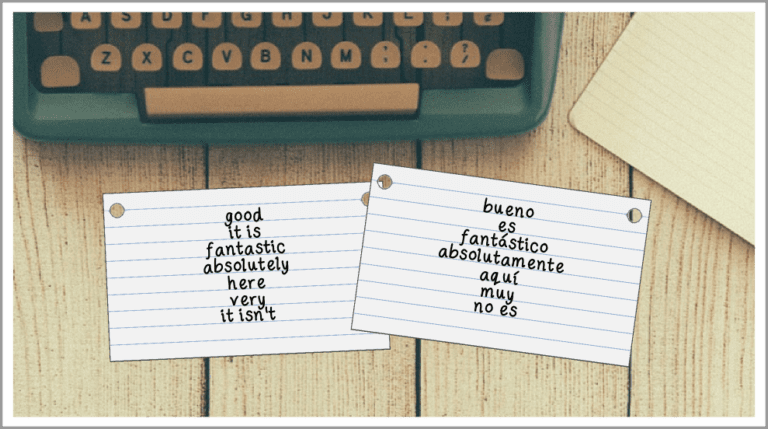the happy linguist
I love cue cards
a must have tool for learning vocabulary
Whenever I get a new student, one thing I always recommend is cue cards. Cue cards are an extremely useful tool when learning languages, and I use them myself all the time. They play an indispensable role in memorising new vocabulary.
In my 3 Minute Languages courses, each lesson gives you a handful of new words and phrases, and then you get the opportunity to practise them by putting them into sentences. To aid the learning process and to make the new words into memories more quickly, what you can do is get some cue cards. You can find cue cards in most stationery shops or even online, however, if you can’t find any, just cut up some pieces of paper into smallish rectangles and they’ll do the same job.
After each lesson, grab a cue card and write down any new words you have learnt. You should do this in a very specific way. For effective memorisation, you should write the new words in English down the middle of one side of the cue card, then turn it over and write the words in French (or whichever language you’re learning) down the middle of the other side.
If you look at the picture below, you can see what the cue card for the first 3 Minute Spanish lesson would look like.


